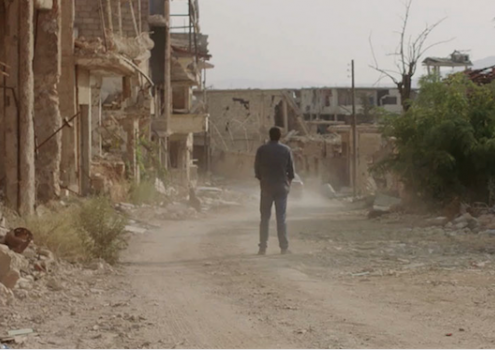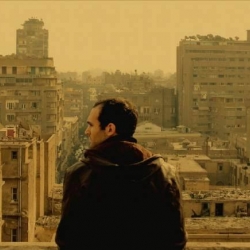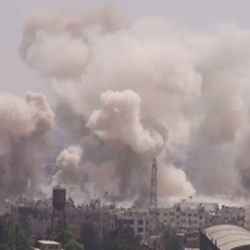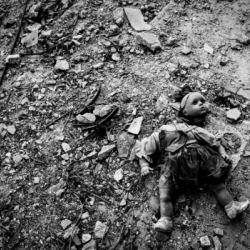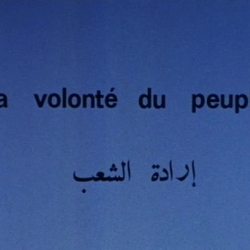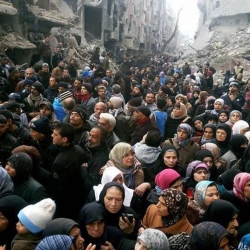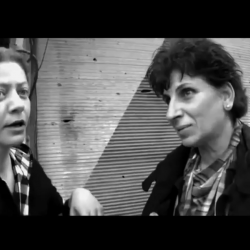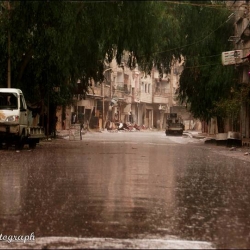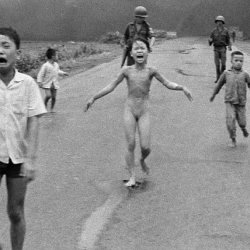Colonial Frames in the Culture of the Resistance
13/03/2020
Author: Rana Issa
In 2017, the artist Ahmed Ghossein presented works in Marfa’ Gallery in Beirut entitled There is No Right or Wrong Here (Arabic: al-arḍ li-man yuḥarriruhā, trans: The Land Belongs to Whoever Liberates it), in which he discusses the real estate situation in South Lebanon through the story of his father who acquired a parcel of land simply by laying his hands on it and declaring that it was his property. This was enough for the Lebanese state to accept the declaration and release a title deed to Ghossein’s father. In this incredibly candid work, Ghossein’s success is in making us see the colonial relationship that binds the Lebanese to the land and the opportunistic relations that binds Lebanese artists to the global market. To demonstrate his ability to get what he wants, the artist lays his hands on a plot of land in the South that is equal in size to the surface area of Marfa’ Gallery, and writes a new title deed in the name of the gallery owner, Joumana Asseily. Thus, the land belongs to whoever settles or colonizes it, and likewise artistic subjects belong to whoever settles or colonises them, so they can be tapped for sale like barrels of oil on a global art market that works like a stock exchange.
Lebanon’s participation in the global art market has improved continuously in the last two years, from Ziad Doueiri to Nadine Labaki, and finally to Ahmed Ghossein and his film All this Victory, which has so far won four prizes at the Venice Film Festival. On the international stock exchange, the director’s film, All this Victory, is winning; while in Lebanon, the film has been subject to severe criticism for the scandal of having gone to Syria to record scenes of destruction and place them in the context of a film about the July 2006 War in Lebanon. The land belongs to whoever destroys and liberates it of its people, and art belongs to whoever settles it and constructs relations that allow him to go to areas that even its local population cannot visit.
The July 2006 War came in the wake of Nasrallah’s speech on the ‘Culture of the Resistance’ (muqāwama), defending the rifle as “constitutive of thought, culture, identity, freedom, and belief.” The war began with Hezbollah’s kidnapping of two Israeli soldiers, leading to the massive destruction of Lebanon by Israel. By way of its steadfastness, Hezbollah proved that it was the most powerful military force in the country. With the onset of the Arab Spring and the irruption of the Syrian Revolution, Hezbollah reinforced the slogans of the Culture of the Resistance, using it as justification for its entry into the war on the side of the Syrian regime in 2013, when its Iranian leadership charged Nasrallah with bolstering the Assad regime and reconquering the town of Qusayr from the Free Syrian Army in a battle that lasted a few weeks. The operation contributed to vanquishing Homs in mid-May 2014, after a long siege that the regime had initiated towards the beginning of the revolution in October 2011. In exchange for its involvement in the war, Hezbollah plundered Qusayr and gave it to its fighters, and then its participation grew to operations in Qalamoun and Zabadani, which also lasted months and ended up again benefiting the regime and Hezbollah, who extended their control over the cities and today have started to colonise them, renovating mosques and settling them with its party members and their families.
The director confirmed that the film was about this war in an interview with Al-Akhbar newspaper. Ghossein stated in the interview that the July 2006 War made him feel the need to use his camera “to bring this memory back to life.” Which memory exactly? Has anyone in Lebanon actually forgotten a war that entrenched a political reality that made Hezbollah the hegemonic political force in Lebanon and militarily force over parts of Syria? Had it passed the director by that his entry into Syria on behalf of the July 2006 War was fully compatible with Hezbollah’s own pretexts for its involvement in Syria? With the scandal engrossing Ghossein’s All this Victory, Lebanese culture bearing the Assad regime and its allies’ imprimatur has raised the bar in the frankness of its affiliations.
All the commotion on Facebook forced the director to give a brief interview to Al Modon on whether he had actually gone to Syria, specifically to Qusayr and Zabadani, to film scenes of Syrian destruction in order to place them in his film as if they were villages in South Lebanon destroyed in the July 2006 War. The journalist asked him if he had used “the Syrian tragedy as a décor?” The director replied that all he did was borrow or create a metaphor. The artist tried to justify this by referring to the metaphor as “opening a discussion on what I’m trying to say in the film’s content and with cinematic language.” In his attempt at a poetic escape from his Syrian adventure, Ghossein himself borrows a metaphor from poetry. Which in turn makes me feel the need to borrow his own act and go in the opposite direction, to the Hezbollah museum in Mleeta, so as to get an idea as to the kind of poetry the director is asking us to understand.
On my last visit to Mleeta in March of this year, I realised that the museum had added new work to its collection of schlocky symbolism. Barrels engineered artistically into stacks, one on top of the other. I ask the guide accompanying me: What are those barrels? He says they represent Israel’s use of barrels bombs in the south. I reply that I hadn’t heard of Israel doing such a thing since 1948, when the Haganah launched barrel bombs on the Palestinians. He replies that, well, the press is politicised and biased, and that barrels facilitated Israel’s population exchanges, aiming to replace the Lebanese population with Syrians and Iraqis.
There are relatively large numbers of Syrians in the south. The United Nations High Commissioner for Refugees estimates that there are 140,000 Syrians living in the south. Wala’ Saleh wrote an article in Al Jumhuriya a few months ago on the condition of Syrians in the south. She writes that the widespread belief that the party was right to fight in Syria and sacrifice its sons of the south often boils down to: “it’s the least we can do to help the ‘Syrian state’ eliminate ‘terrorism’, in return for it having ‘stood nobly by us’ during the July 2006 War.”
In the narrative of the July 2006 War that the director wants us to accept, his metaphor is a wager on the victors writing history and on their ability to invent a memory that has no relation to what actually happened. We see that in an interview on YouTube from the Venice Film Festival, in which he says that the goal of his film is to bring the visual memory of the July 2006 war back to life. He also says that his goal in the film is to think about the culture of steadfastness (sumūd) in the south, the very culture that’s incessantly proclaimed by Hezbollah.
The director ends his conversation with Al Akhbar to ask: “Is the only remaining option in Lebanon for my generation and our children to emigrate? Is this our only option?” Hezbollah made its choice: killing, torture, displacement, and population exchange in Syria. Hezbollah also found a solution for those who obey it: colonising Syria, and economic development in the country by permitting its colonisers to rob Syria not merely of its children, but of their stories and images. In the film All this Victory, the artist identifies with this approach by changing the names of things. The destruction of Qusayr and Zabadani, the barrel bombs dropped under the banner of resistance, finds its cultural devotees. They strip it of its political reality and whitewash its image by giving it the victor’s political identity: The July 2006 War as a diary devoid of the politics that brought it about. This misnaming—this counterfeiting, and the normalisation that goes with it—is at the crux of the matter.
On the relationship between violence and language, Albert Camus wrote that “to misname things is to add to the world’s woes, as a lie is precisely a great human misery, and thus the great corresponding human task is not to participate in the service of lies.” Ghossein has allowed himself to pass off the identity of the destruction so as to whitewash it for the victors, thus revealing a superficial understanding of history. Because history isn’t written by the victors, as the cliché goes. History is written by all who bear a profound loss and who experience it as tragedy. The culture of colonialism is vulgar, void, filled with lies that make it boring, so that it comes more and more to resemble political speechifying. No serious critic has the time to spare to watch it. What remains for the defeated is history, and we read, watch, and think together with the Syrians who since the beginning of the revolution have written and filmed their stories, pondered the way forward, and conjured new meanings from the reality of the situation. As for the films of the Resistance, they’re for another audience who accept colonialism and measure success in commercial prizes, and appropriate that which they have no right even to borrow.
This article was translated from Arabic to English by Stefan Tarnowski



